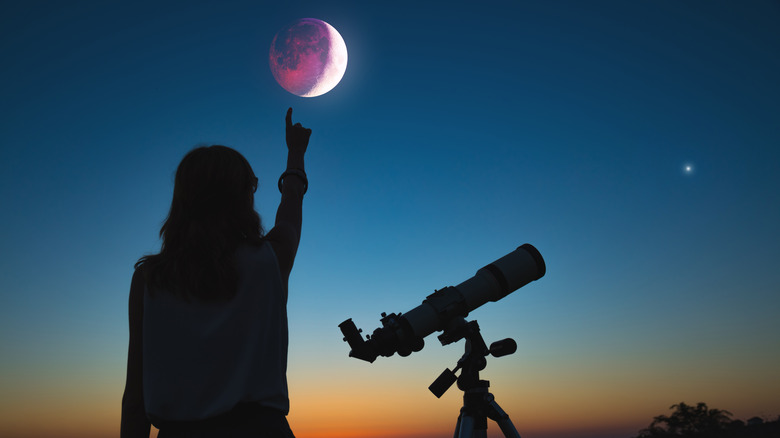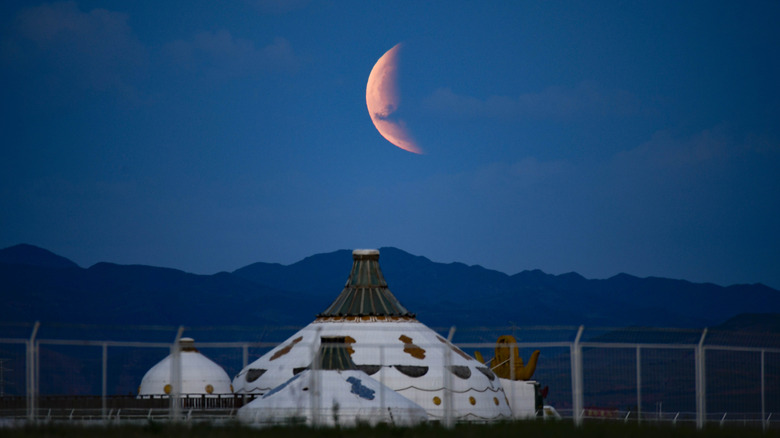This Week's Total Lunar Eclipse Is The Last One We'll See For 3 Years
Let's face it: lunar eclipses typically do not evoke the same sense of awe from people as solar eclipses do. There are many reasons for this — the most prominent one being that they are a lot less visually spectacular. If that wasn't all, total lunar eclipses also happen much more frequently than solar eclipses (via Britannica). Combined, these factors make it much easier for folks to give lunar eclipses a pass.
However, as NASA notes, if you miss the total lunar eclipse on Tuesday, November 8, you'd need to wait another three years — until 2025 — to witness such an event again. The upcoming lunar eclipse, known the "Beaver Blood Moon" lunar eclipse, is scheduled to take place in the early hours of November 8.
What makes the lunar eclipse on November 8 even more interesting is that it is the first Election Day total lunar eclipse to ever occur. The next time such an event happens will be 372 years from now on November 8, 2394 (via USA Today). Needless to say, this lunar eclipse is, indeed, special. However, while this total lunar eclipse is the last one we'll see for the next three years, there will be several partial lunar eclipses within that time frame.
For those wondering, lunar eclipses occur when the Earth comes directly between the sun and the moon, resulting in the Earth's shadow being cast on the moon. While some light still manages to reach the moon, the Earth's shadow does cause the color of the moon to change dramatically.
Where will the Beaver Blood Moon Lunar Eclipse be visible?
The November 8 lunar eclipse will be visible to people living in North America, Central America, Hawaii, and Alaska, according to NASA. It will also be visible to people in parts of Asia, Australia, and New Zealand. In the U.S., the eclipse will begin at 3:02 am EST before reaching totality by 5:16 am. The totality phase of the eclipse is expected to be its most visually spectacular, as the moon's color will turn into a coppery-red hue. This color change occurs because the Earth's atmosphere bends the light falling on it and scatters the blue wavelengths more than the red ones. This is the same phenomenon that gives the evening and morning skies on Earth their warmer colors.
Unlike solar eclipses that only last a couple of minutes, this red moon phase of tomorrow's lunar eclipse will last more than 85 minutes, ending around 6:42 am EST. Once the totality phase of the eclipse ends, the event will continue for another couple of hours before finally ending at 8:56 am EST.
Unlike solar eclipses, which could cause eye damage if viewed directly, lunar eclipses do not pose such risks. Those wishing to watch the celestial phenomenon can do so by watching the moon directly. There will also be ample opportunities to photograph the eclipse if you have good camera equipment. NASA has also prepared a map that shows where each phase of the eclipse will be visible around the world.

